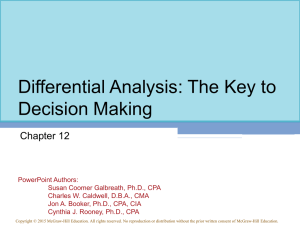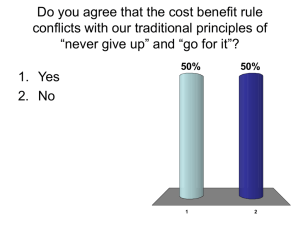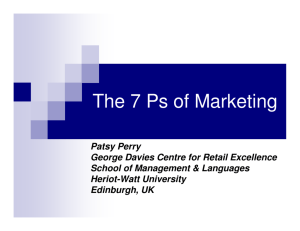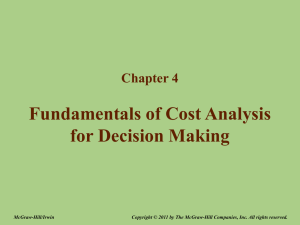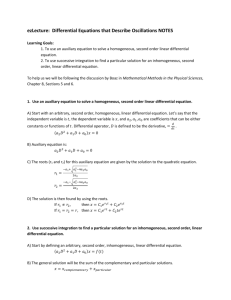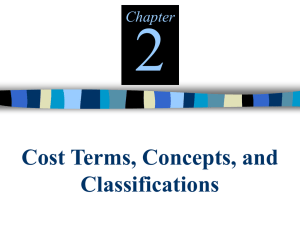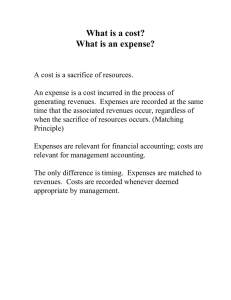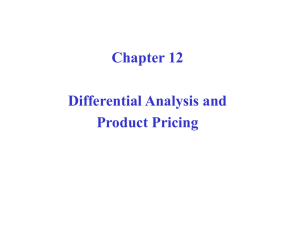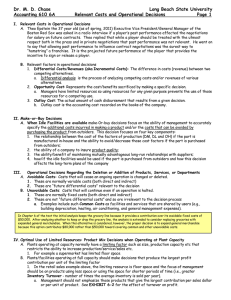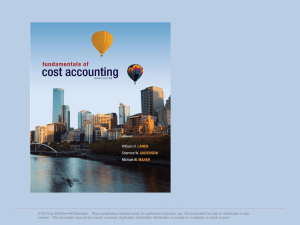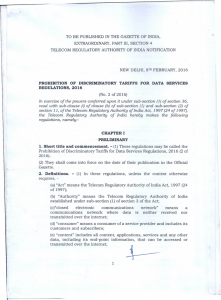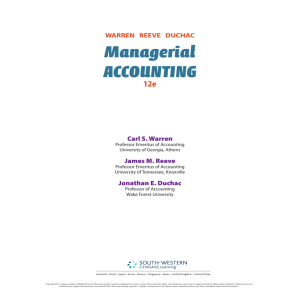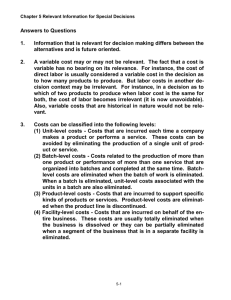MOS 372 - Short Term Decision Making
advertisement
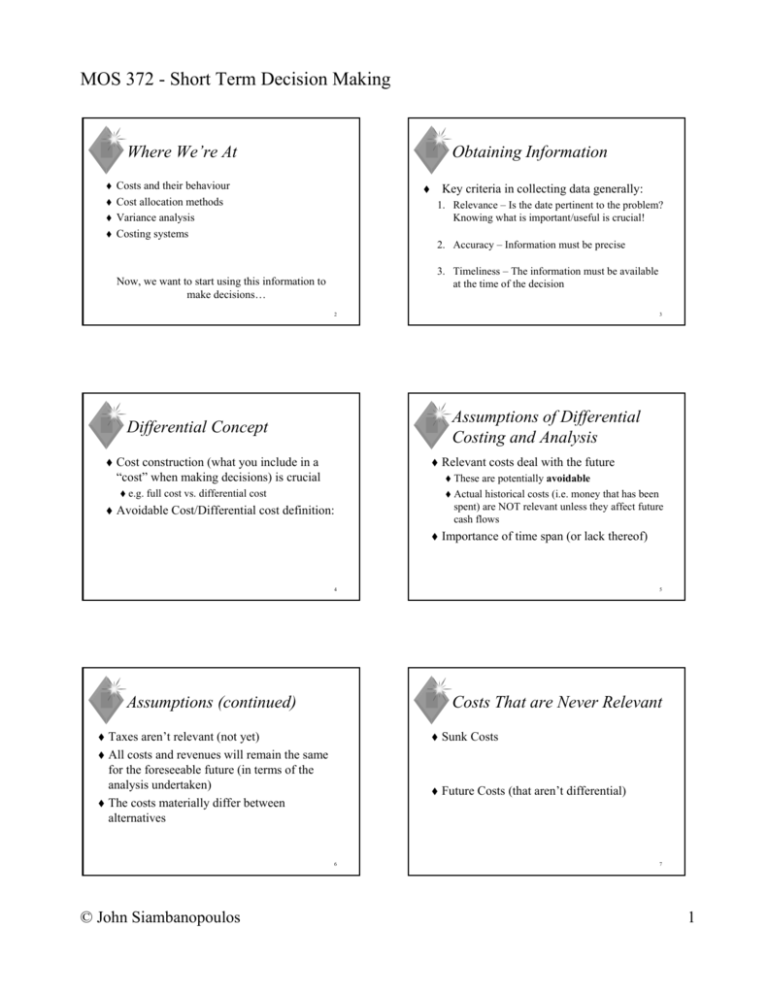
MOS 372 - Short Term Decision Making Where We’re At Obtaining Information Costs and their behaviour Cost allocation methods Variance analysis Costing systems Key criteria in collecting data generally: 1. Relevance – Is the date pertinent to the problem? Knowing what is important/useful is crucial! 2. Accuracy – Information must be precise 3. Timeliness – The information must be available at the time of the decision Now, we want to start using this information to make decisions… 2 3 Assumptions of Differential Costing and Analysis Differential Concept Cost construction (what you include in a “cost” when making decisions) is crucial Relevant costs deal with the future e.g. full cost vs. differential cost Avoidable Cost/Differential cost definition: These are potentially avoidable Actual historical costs (i.e. money that has been spent) are NOT relevant unless they affect future cash flows Importance of time span (or lack thereof) 4 5 Assumptions (continued) Costs That are Never Relevant Taxes aren’t relevant (not yet) All costs and revenues will remain the same for the foreseeable future (in terms of the analysis undertaken) The costs materially differ between alternatives 6 © John Siambanopoulos Sunk Costs Future Costs (that aren’t differential) 7 1 MOS 372 - Short Term Decision Making Fixed Overhead Usually Fixed O/H isn’t differential, therefore not relevant Be careful of “allocated” overhead BUT NOT ALWAYS! Why should we NOT use full costs (this would include allocated overhead) to figure out problems between different alternatives? When should we use full costs? Try to look at marginal or incremental differences If there is a net benefit BEFORE allocating fixed costs, what should you do? 8 Alternative Analysis Types of Alternative Choices Goal: To minimize cost or maximize profit Steps 1. 2. 3. 4. 5. 9 Define the problem Select possible solutions or alternatives Measure the quantitative factors & consequences Evaluate the the qualitative factors Make a decision Cost Minimization (costs) Method change (change in process, addressing a bottleneck) Operations planning & scheduling Make or buy (outsourcing) Order quantity/size (order a large volume for better terms or…) 10 Types of Alternative Choices (cont’d) Types of Alternative Choices (cont’d) Profit Maximization (costs & revenues) Pricing decisions Using scarce resources (utilizing idle capacity) Discontinuing/adding a product, service, or department 12 © John Siambanopoulos 11 Profit Maximization Accepting or rejecting a special offer (custom orders, etc.) Sell or process further (joint products) Other marketing tactics (e.g. change in advertising) 13 2 MOS 372 - Short Term Decision Making Other Issues Total or Incremental Approach? Sales (5,000 units @ $40 per unit) Less variable expenses: Direct materials (5,000 units @ $14 per unit) Direct labour (5,000 units @ $8 and $5 per unit) Variable overhead (5,000 units @ $2 per unit) Total variable expenses Contribution margin Less fixed expense: Other Rent on new machine Total fixed expenses Net operating income Current Situation $ 200,000 Situation With New Machine $ 200,000 Differential Costs and Benefits - 70,000 40,000 10,000 120,000 80,000 70,000 25,000 10,000 105,000 95,000 15,000 15,000 62,000 62,000 18,000 62,000 3,000 65,000 30,000 (3,000) (3,000) 12,000 $ $ Using decision trees Sensitivity The “Just One” Fallacy E.g. one more person at the grocery store 14 15 Utilization of a Constrained Resource Other Issues (cont’d) Qualitative aspects (strategic benefits, loss leader product, competitive advantage, etc.) Short-term decision vs long-term investments Legal pricing issues Predatory pricing Discriminatory pricing Dumping Usually the product, segment, etc. that makes the most contribution ($ and %) is considered the best However, contribution doesn’t take into account the effect of that product’s usage of various resource (e.g machine’s available time for operation) 16 Profitability Index Pitfalls to Avoid Compare the relative contribution of different options vs. their use of the resource Product 2 1 Selling price per unit Less variable expenses per unit Contribution margin per unit Current demand per week (units) Contribution margin ratio Processing time required on machine A1 per unit © John Siambanopoulos 17 $ 60 36 $ 24 2,000 40% 1.00 min. $ 50 35 $ 15 2,200 30% 0.50 18min. 1. Sunk costs - Irrelevant 2. Unitized fixed costs – OK for product pricing but they aren’t truly variable and not differential (still must be paid); therefore remove 3. Allocated fixed costs – Identify avoidable costs 4. Opportunity costs – Identify and include 19 3


